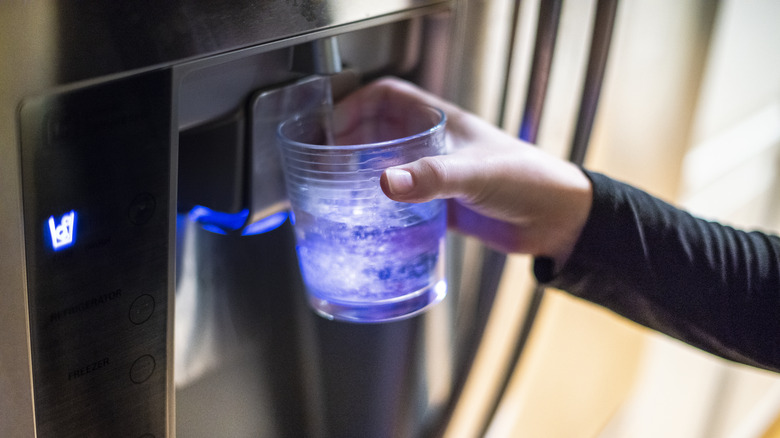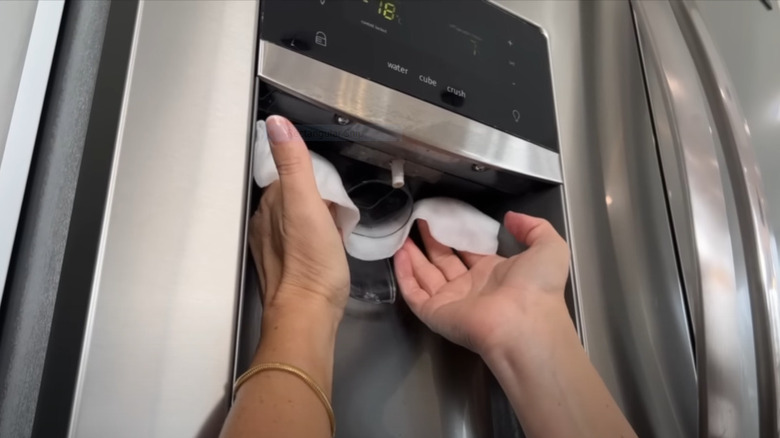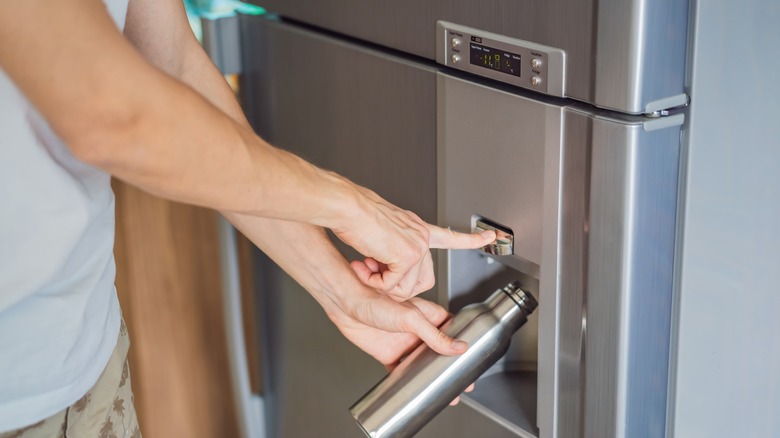Crucial Steps For Cleaning Your Fridge's Water Dispenser
In the realm of kitchen cleanliness, the refrigerator's water dispenser often goes unnoticed, living in the shadows of the more visible, high-traffic elements. However, taking care of this component isn't an option but a necessity for maintaining your fridge's functionality and, more importantly, ensuring the health of anyone who relishes a thirst-quenching glass of water. In under a half hour, you can transform your refrigerator water dispenser from a neglected accessory to a shining star in your kitchen appliance lineup. The supplies required for this task are most likely nestled within your home, the most vital being the multi-tasking kitchen pantry staple — white vinegar.
How frequently should you clean your refrigerator's water dispenser? Making it a routine two to four times a year would be enough to protect against lurking contaminants and keep your water tasting pure. But when unsure whether your water dispenser needs cleaning, trust your senses and your fridge's built-in intelligence. Water beginning to err toward a peculiar taste or smell should ring the first alarm bell. Secondly, heed warnings flashed by your fridge's filter, a noticeable decline in your dispenser's water flow (a likely dip in water pressure), or fridge clean water dispenser spout mold. With that in mind, let's dive into the steps of cleaning your fridge water dispenser.
How to clean your fridge's water dispenser with vinegar
Begin by assembling the essentials: distilled white vinegar, a bowl, a soft cloth, a gentle brush or pipe cleaner, a screwdriver, a small funnel, and a towel. Then, switch off the refrigerator's water supply valve tucked away under your kitchen sink or inside the fridge. Alternatively, shut off the main water supply to your home. The next step is disconnecting one end of the dispenser's water line: that copper tubing leading to the dispenser's tank. With the help of a funnel, channel the vinegar into the tubing and let the acid dissolve the mineral deposits for at least 10 minutes. Following this is the time to purge the system: place a container under the dispenser nozzle and press the dispenser button, letting the vinegar solution exit the system.
From there, soak a soft cloth in vinegar and wrap it around the dispenser nozzle for a few minutes, then bring a gentle brush or pipe cleaner dipped into the vinegar to the party. Carefully scrub the inside of the dispenser nozzle. Reconnect your water line, turn on your refrigerator water supply, and run water through the dispenser until the vinegar odor fades. Now, treat your tray to some TLC: pull it out and clean it with a vinegar-drenched paper towel. Don't overlook the surrounding exterior surfaces, though. Finally, dry every cleaned part. Your fridge water dispenser should now be a glistening haven of freshness, ready to serve you clean water.
Precautions for cleaning your fridge's water dispenser
Safety is paramount when dealing with any electric appliance; your refrigerator is no exception. So, slip that refrigerator plug off the socket before even picking up your cleaning gear. The mighty white vinegar may work magic on your fridge dispenser line and surfaces, but it has a dark side: it's irritative. If it finds its way onto your skin or pulls a sneak attack on your eyes, your quick-savior plan is a plentiful splash of water.
When testing your water at the culmination of your cleaning, a taste or whiff of the dispersed water can confirm vinegar's presence (or absence), signaling when to stop flushing. And if facing stubborn hard water deposits? While scrubbing them away with brute force might be tempting, you risk scratching your stainless-steel beauty. Instead, use a vinegar-soaked paper towel. In the same vein, shun the thought of using metallic scrubbers or brushes on fridge components. They are scratch-attack villains, leaving trails of damage in their wake.
Now, onto post-cleaning wisdom and the secret to defending against mineral deposits. Extinguish all moisture traces from your dispenser to fend off mold and bacteria sinister advances. But do exercise caution when separating or reassembling components. Show them love, not force. Otherwise, refer to your user manual if resistance arises. As for how to prevent deposit build-up in your fridge dispenser, two options stand out: replacing your fridge water filter every six months and installing a water softening system.


